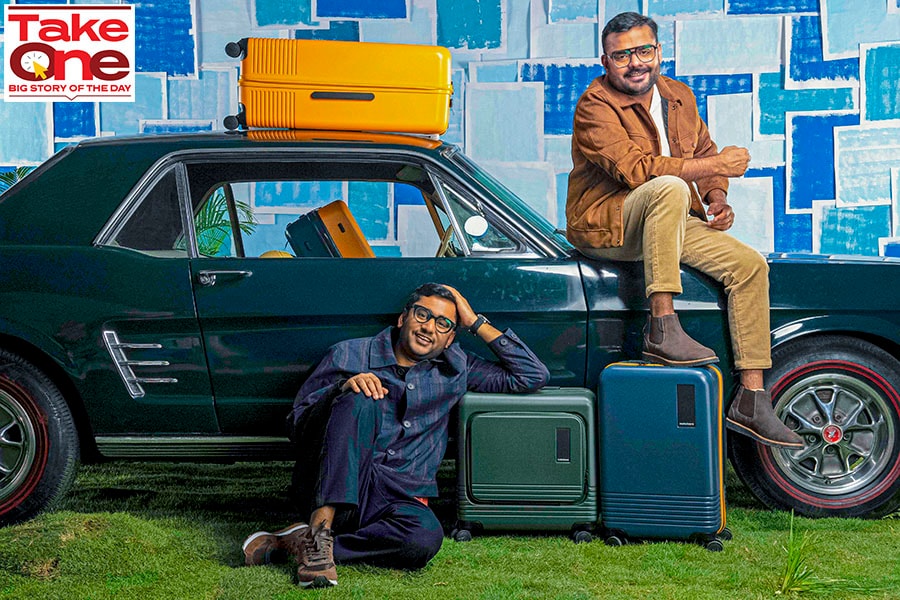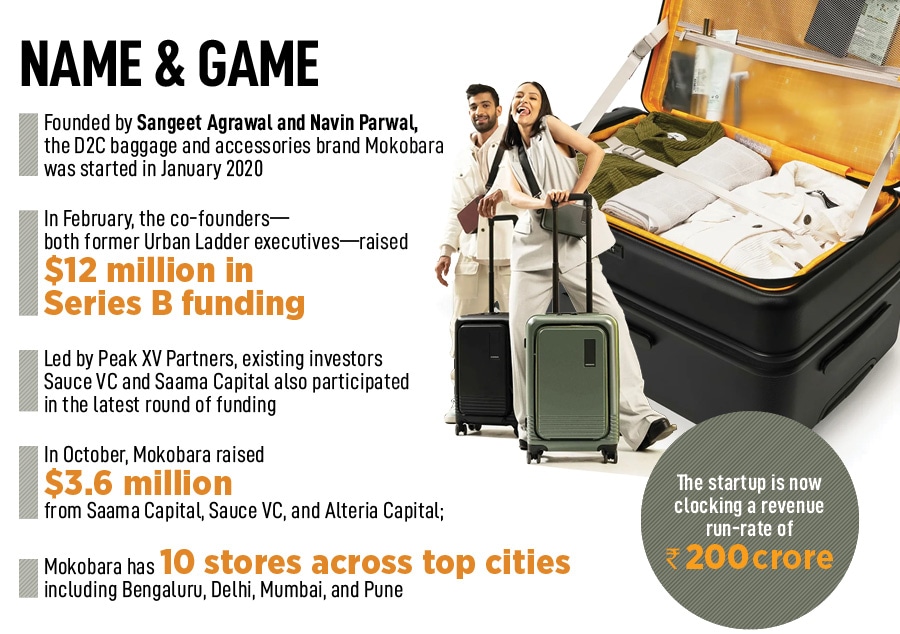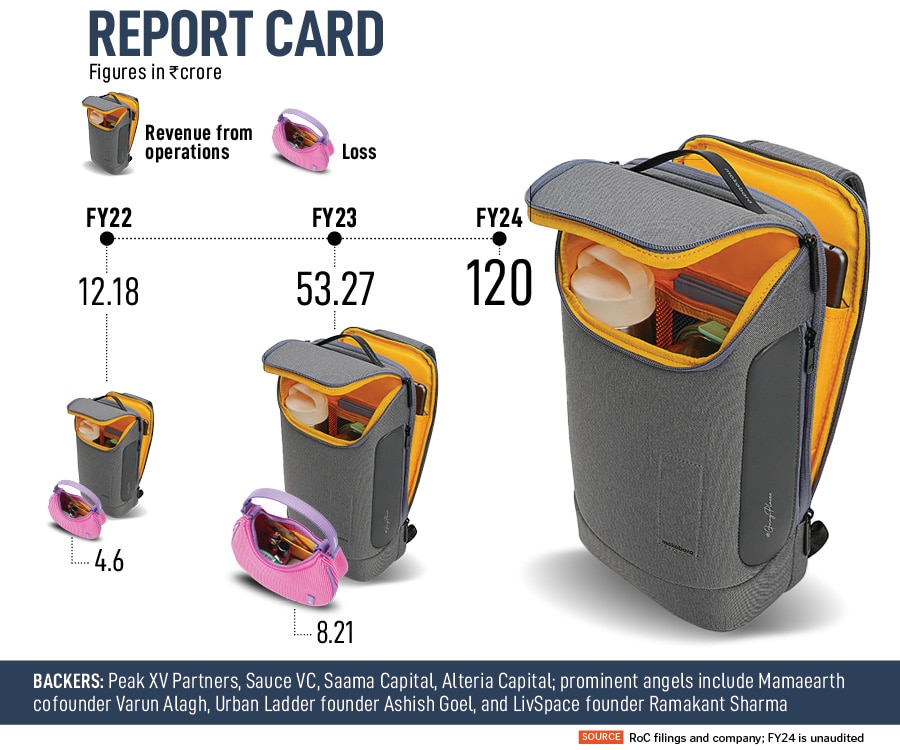
How Mokobara shed its baggage
A mechanical engineer from Raipur and a designer from Renukoot are trying to disrupt the staid travel and luggage industry with their bold and flamboyant design play. Can Mokobara change the rules of the game with its radical fashion statement?
 Sangeet Agrawal (left) and Navin Parwal, Cofounders, Mokobara Image: Selvaprakash Lakshmanan for Forbes India
Sangeet Agrawal (left) and Navin Parwal, Cofounders, Mokobara Image: Selvaprakash Lakshmanan for Forbes India
May 2019, Bengaluru. The cafeteria was crammed with young coffeeholics. Sangeet Agrawal and Navin Parwal, too, placed an order for a steaming cuppa, dashed to occupy the lone vacant table parked in the heart of the restaurant, and elegantly displayed their ‘dazzling baby’ on the wooden surface. Brimming with excitement, the friends anticipated a wild ‘shock and wow’ from the crowd who they thought would be bewitched by the beauty of the object flaunted on the table. “We expected magic,” recounts Agrawal.
What happened next was nothing less than tragic. “Nobody even bothered to look at it,” recalls Agrawal, alluding to the muted reaction of the consumers towards the maiden prototype of yet-to-be-launched cabin luggage brand Mokobara. “Nobody got excited,” rues the rookie founder. A mechanical engineer from Raipur, Agrawal has had stints with Mahindra, Urban Ladder, and Flipkart, was obsessed with the idea of creating a travel product that would have magical appeal in design and quality, and worked behind the scenes for over a year to build the prototype. The reaction of the friends and family was unpleasantly shocking. “It looks like a toy,” quipped some of them.
Meanwhile, inside the café in Bengaluru, there was more shock and awe. “Nobody came to us and asked where we bought this luggage from,” laments Parwal, who was a reluctant partner in the crime of starting a travel product brand. “I don’t want to sell bags in my youth…I am quite happy with my job,” was how he snubbed the initial overtures of his former Urban Ladder colleague Agrawal, who wanted to rope in the ace designer for his maiden entrepreneurial venture. “It is very boring and something that doesn’t excite me,” Parwal stayed adamant for a while but agreed to explore the idea.

The duo decided to start with cabin luggage. Hours of brainstorming in the evenings and late nights, months of relentless pursuit of what it takes to build a disruptive product, and pumping in loads of hard-earned risk capital resulted in the prototype. “We wanted to create magic over mundane,” says Agrawal. Undeterred by the muffled reaction, the friends tried to find out why their magical product looked mundane. The reasons were many.














